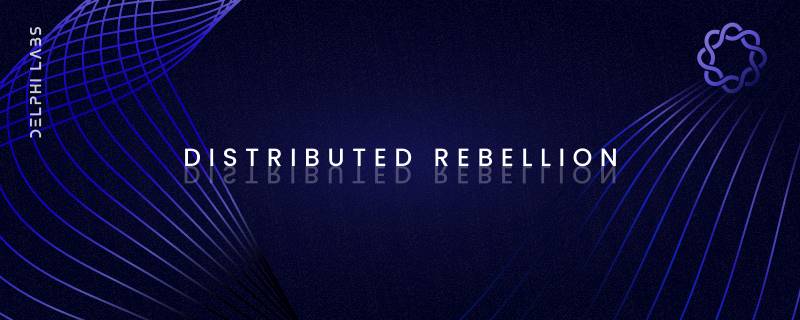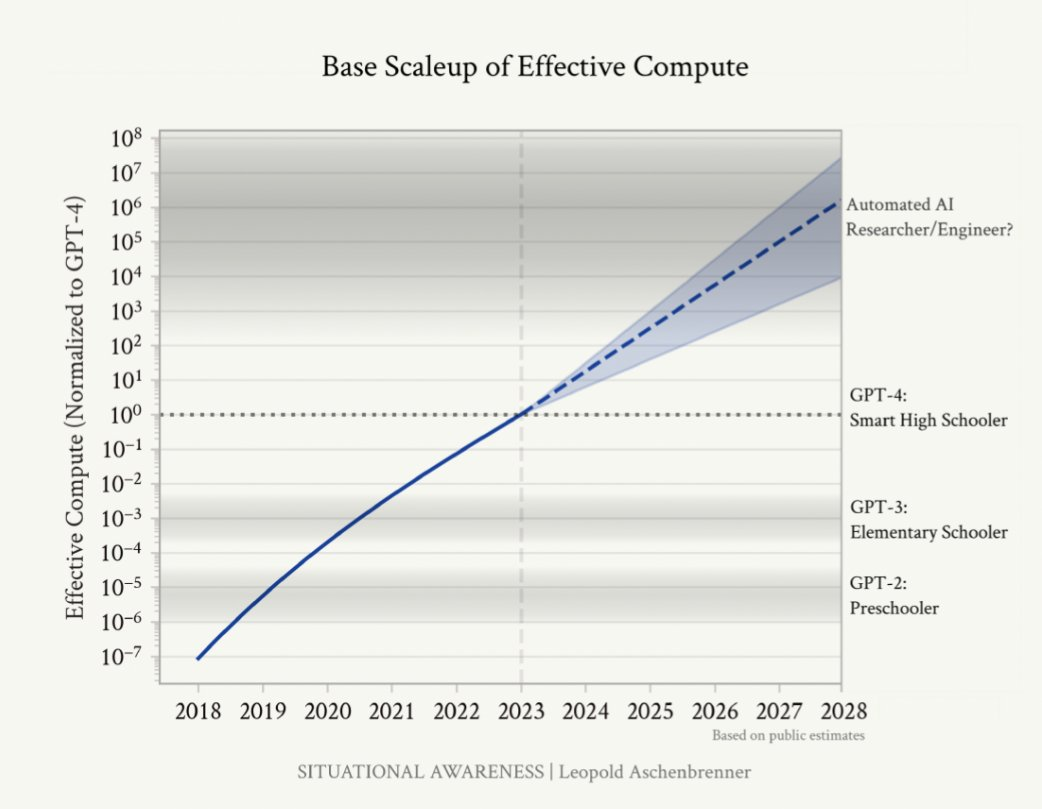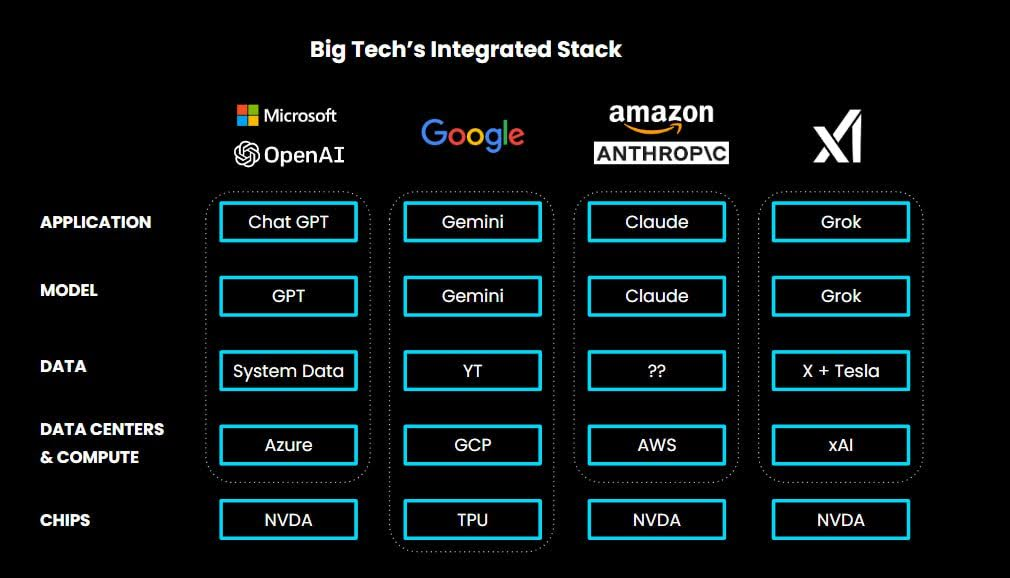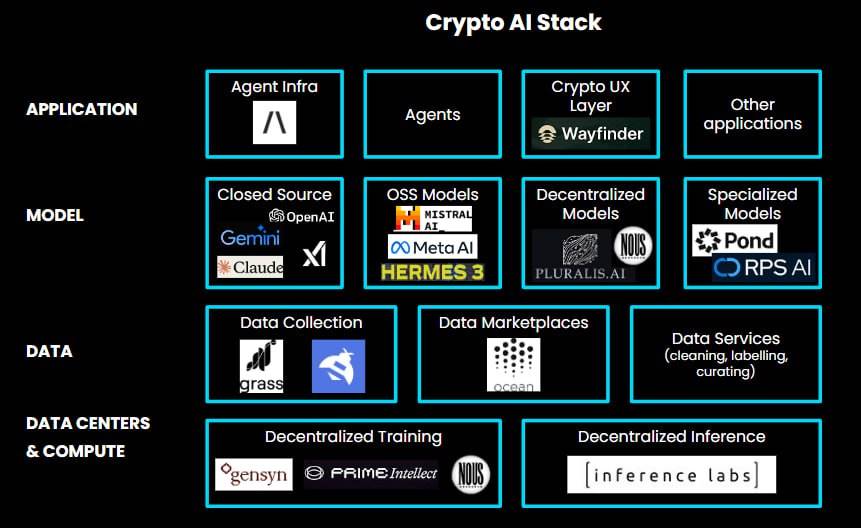Author: Delphi Labs
Compiled by: TechFlow

This article was written by Luke Saunders ( lukedelphi ) & Jose Macedo ( ZeMariaMacedo ).
Artificial intelligence represents the biggest technological revolution in history and has sparked a technological arms race unlike anything we have seen before. Current AI models already rank in the top decile on most standardized college exams and outperform humans in many tasks, including AI research itself. Even at current levels, this has a transformative impact on many industries such as search, customer service, content creation, programming, and education.
We expect AI capabilities, funding, and impact on society to accelerate further. All of the major technology companies realize AI is critical to their business and are investing accordingly. NVIDIA’s revenue, the best indicator of AI capital spending, is expected to exceed $100 billion in 2024, more than double what it will be in 2023 and more than four times the revenue of the year before.
Google CEO Sundar Pichai's thoughts on AI investments:
“For us, the risk of underinvesting is much greater than the risk of overinvesting.”
At the same time, startups are realizing that AI is a disruptive force that can replace companies that have existed for decades. An estimated $ 83 billion has been invested in AI startups in the past 18 months.
Given that AI capabilities tend to increase exponentially with increases in computing power, we may well be able to achieve something like artificial general intelligence (AGI) within a decade.

Source: Situational Awareness
Author: leopoldasch
In this post, we argue that the competitive environment will lead to a world with millions of models, and that cryptography is the ideal underpinning for this multi-model world. We will first discuss why we believe a multi-model world is an inevitable outcome of AI. Next, we will describe the unique advantages that cryptography provides to AI. Finally, we will describe what we believe is the technology stack for cryptography and AI, and provide examples of projects that we are interested in.
There are indeed many strong philosophical and ethical reasons for combining open source AI and cryptography, and these arguments have been well discussed elsewhere . We fully agree with these views, and this is one of the motivations for our development in this area. However, in this article, we will focus on practical reasons why the combination of cryptography and AI will win, rather than discussing the ethical reasons why it should win.
Super Model and Multi-Model
We are now moving towards a world where a small number of large, vertically integrated technology companies produce “super models” that dominate everything else.

However, we believe this is not the final outcome for several reasons:
Risk issue: Organizations, entrepreneurs, and developers building AI-based experiences don’t want to be dependent on a single closed-source company that can change its model at any time, modify its terms of use, or even stop providing services to them entirely.
Cost-Performance Tradeoff: The extremely large, general-purpose models favored by large tech companies are inherently more expensive to train and run. As a result, this makes them overpriced and overpowered for many use cases. While this is not a major consideration right now, as people are not thinking about profitability, as AI advances, people will optimize for the lowest cost to get the desired performance level. There are many tasks where large models are not competitive in this regard. There is a large body of research to support this view, showing that smaller, more specialized models can outperform general-purpose models on multiple tasks: medical imaging diagnosis , fraud detection , speech recognition, and many more.
Vertical Integration: As Apple has repeatedly demonstrated, the best products often result from vertical integration of the entire technology stack. Ambitious entrepreneurs building AI-driven products will seek to gain competitive advantage by building on their own specialized models. This allows these products to capture more value and thus attract more investment.
Privacy concerns: AI will become a core technology in organizational workflows to an extent that no other technology can match. Many organizations are reluctant to hand over sensitive data to these models.
For these reasons, we believe we are more likely to move into a world where there are many smaller, specialized models that are tailored and cost-effective for specific use cases. Application developers and users will leverage open source models, such as those provided by LLaMA or MistralAI , as a basis for fine-tuning their own specialized models, often using proprietary data. Many models will continue to run on servers, but smaller, more privacy-focused applications will run locally on client devices, and other applications that require censorship resistance may use decentralized computing platforms.
This is a world of modular AI building blocks where developers and entrepreneurs compete to provide value to users, who are able to select and combine different services based on their specific needs. Routing, orchestration, composition, payments, and a variety of other infrastructures need to be built to disassemble the “God Model” technology stack and serve this emerging AI economy. This is also the world where cryptocurrencies thrive.
Encryption and AI
Intuitively, cryptocurrency seems like an area that could find utility in this multi-model world. However, the hype has led many poorly informed investors to make large capital allocations in the space. Just like the previous infrastructure bubble, many projects are being funded and built that probably shouldn’t exist. As a result, it’s difficult to determine which sub-sectors within the cryptocurrency and AI space actually have value, leading many to view the entire space as a meme with no fundamental value.
We don’t think this is a meme, but it is true that this multi-model world could theoretically exist without cryptocurrencies. Therefore, it is important to focus on the unique differentiating features of cryptocurrencies that help us create more revolutionary products, or ideally products that cannot be built without cryptocurrencies. To do this, we first identify the unique properties of cryptocurrencies and how they can be applied to the field of AI in a way that can produce better products. We will then discuss the technology stack of crypto and AI and provide examples of use cases that we believe are relevant.
Coordination layer: Crypto rails excel at facilitating collective coordination without the need for centralized control. It is particularly effective at overcoming the chicken-and-egg problem inherent in most markets, enabling the rapid onboarding of large numbers of new users through crypto-native incentives.
Small teams building models in-house may not have direct access to all the resources they need. For example, while AI labs at large tech companies may have their own computing resources, small teams do not. Likewise, these teams need access to data and may need to recruit a diverse group of people to provide human feedback. These needs are well suited to being met through professional marketplaces, and we believe that marketplaces that leverage crypto infrastructure will have a competitive advantage over those that do not.
Open, permissionless API : Cryptorails acts as an open, permissionless API that can be accessed by anyone, anywhere, without the need for KYC, a credit card, or any other form of approval. This is very important for AI agents, because in order to be able to act fully autonomously, they need to be able to access services, deploy code, and transfer value without human intervention. This enables science fiction-like behaviors such as agent collectives, agents paying each other for services, taking on debt, and even raising funds.
Trustlessness: Crypto rails are typically trustless, meaning you get cryptographic assurances that they haven’t changed, access hasn’t been accidentally revoked, and you can verify that execution is as expected. This is important for modular AI architectures because, unlike ensemble approaches where builders need to compose with a range of primitives they don’t control, users need to inherently trust many services, many of which they don’t even know about.
Censorship resistance: Applications running on crypto rails are unstoppable if deployed as immutable contracts. Even if they are upgradeable, it is usually done by a decentralized autonomous organization (DAO) that needs to reach consensus. Assuming AI is as powerful as we expect, governments will likely try to control and influence it. In fact, we are already seeing this happen. Just as Bitcoin and cryptocurrencies provide monetary/financial infrastructure that is outside the system, crypto combined with AI provides unstoppable intelligence.
The intersection of encryption and artificial intelligence
Given these benefits, what applications do we think are particularly interesting at the intersection of crypto and AI?

Data Center and Computing
The uses of model computing can be roughly divided into two categories: training and inference. We believe that the use of decentralized computing in these two aspects is of great significance, and we will discuss them separately below.
Decentralized Training
Distributed computing is currently difficult because of the strict communication and latency requirements between nodes during training. There are many teams trying to solve this problem, and given the scale of the potential gains and the talent of the participants, we believe it will be solved. Some notable approaches include DisTrO by NousResearch and OpenDiLoCo by PrimeIntellect .
In addition to solving the technical challenges of distributed training and building a product that simplifies this complexity, the winner must also figure out:
How to ensure quality and accountability on the permissionless web
How to start the supply side, ideally data centers and clusters, rather than consumer-grade hardware Token incentives may be the basic strategy for incentivizing the supply side, and more creative approaches may include giving computing providers ownership of the final model.
Fundamentally, the advantage of the distributed computing market is the ability to take advantage of the lowest marginal cost of compute in the world. This becomes increasingly important as costs of existing service providers rise and more companies and organizations turn against them and look for cheaper alternatives. Disadvantages include latency, heterogeneous hardware, and the lack of all the optimizations and economies of scale that come with building and operating your own data centers. It remains to be seen what the future holds.
Verifiable Inference
In general, we see the use case of verifiable inference as extending trust-minimized systems with AI capabilities. It is not practical to embed models into smart contracts, but it is possible to run the model off-chain and publish some credentials on-chain that prove it works as expected. For example, a project can trustlessly delegate governance decisions (e.g., decisions about risk parameters in currency markets) to a model off-chain.
This concept can also be used more generally for open or closed source models, providing users with assurance that the output is from the model they expect. This is likely to become increasingly important as applications and users increasingly use AI for more critical tasks. There are a number of projects tackling this challenge in different ways, such as Inference Labs ( inference_labs ), a portfolio project of Delphi Ventures.
data
Today, training large language models (LLMs) is a multi-step training process that requires various types of data and human intervention. The process starts with pre-training, during which large language models are trained using cleaned and curated common crawl and other freely available datasets . In the post-training phase, these models are trained on smaller, more specific labeled datasets to make them master relevant knowledge in a specific field (such as chemistry), usually with the help of experts.
To secure fresh or proprietary data, AI labs often partner with owners of large data sources. For example, OpenAI signed a deal with Reddit rumored to be worth $60 million. Similarly, the Wall Street Journal reported that News Corp’s five-year deal with OpenAI was valued at more than $250 million. Clearly, data has never been more valuable.
We believe that crypto networks can effectively help teams obtain the data and resources they need at each stage. The most interesting area may be data collection. We believe that crypto incentives are very suitable for promoting the supply side of data collection and tapping into a large number of important long-tail data sources.
For example: Grass AI ( getgrass_io ) encourages users to share their idle internet bandwidth to help scrape data from the web, which is then structured, cleaned, and made available for AI training. If Grass can build enough supply, it could effectively act as an API key, feeding models with the latest internet data.
Hivemapper is another good example - the network was launched in November 2022 and collects millions of kilometers of road images per week, already covering 25% of the world. It is obvious that similar models can be applied to other forms of multimodal data and sold profitably to AI labs.
As the NewsCorp and Reddit deals show, many companies have valuable data, but many are either too small or lack connections to AI labs to monetize it. Likewise, it may not be worth it for an AI lab to strike a deal with a single small vendor. A well-designed data marketplace can alleviate this problem by connecting vendors to AI labs in a uniform way. There are challenges here, primarily addressing data quality and the fungibility of APIs and data.
Finally, data preparation is a set of important tasks including annotation, cleaning, data augmentation, transformations, etc. A small team may not have all of these skills and may seek to outsource. Scale AI ( scale_AI ) is a centralized company that provides these services - currently estimated to have annual revenue of ~$700M and growing rapidly. We believe that a well-designed marketplace and workflow system based on cryptography will work well here. Lightworks is a company that Delphi Ventures has invested in, along with several others - all in the early stages.
Model
According to Delphi Digital’s report The Tower & The Square , the production and control of AI models is almost entirely controlled by “big corporations” and governments. This is a far more dystopian state than government control of currency, as it enables them to not only control one of the most important economic resources, but also to dictate the narrative by censoring and manipulating information, excluding certain “undesirable” people, using people’s private AI interactions against them, or simply using AI to maximize advertising revenue.
There are many smart people working to create "Square" - a decentralized network with the goal of producing a completely neutral, censorship-resistant model that is accessible to everyone. So, just as Bitcoin and cryptocurrencies provide a monetary/financial infrastructure that sits outside the financial system, crypto x AI will provide an intelligent system that sits outside the system.
Such projects aim to create a powerful model that competes with GPT and LLaMA by decentralizing every aspect of the model creation process - the network is responsible for acquiring and preparing data, training on its own decentralized compute, running inference on the same compute, and coordinating the entire process through decentralized governance. No part of the process is centralized, so the model is truly owned by the community and cannot be controlled by a "tower".
Obviously, creating a decentralized model that comes anywhere close to the cutting-edge models is going to be very difficult. We can’t expect most users to accept a product of inferior quality for ethical reasons. We view projects in this category as “moonshots” that are unlikely to succeed, but would be extremely valuable if they did — and we sincerely hope they do.
It is worth mentioning that there are centralized AI labs that accept the idea of cryptocurrency and may own tokens or otherwise use crypto technology.
NousResearch and PondGNN are some examples of Delphi Ventures investments. Finally, model creation infrastructure such as opentensor 's Bittensor is part of this model architecture. Bittensor has been discussed in depth elsewhere , so we will not discuss its pros and cons.
Application Scenario
Eric Schmidt mentioned in a recent speech:
If TikTok gets banned, I suggest each of you do this: say to your Large Language Model (LLM): “Make me a copy of TikTok, steal all the users, steal all the music, customize it to my preferences, make this app in the next 30 seconds, release it, and if it doesn’t go viral within an hour, do something else similar.”
This statement illustrates the vast capabilities we expect intelligent agents to have. But to accomplish these tasks fully autonomously, these agents will need to be able to use a variety of services without human intervention — transferring value and establishing economic relationships, and deploying and executing code without permission.
Traditional banking applications, KYC (know your customer) and onboarding processes are not suited for these agents. Inevitably, they will encounter a system designed for humans and unable to access without assistance.

Crypto infrastructures provide the perfect platform. They provide a permissionless, trustless, and censorship-resistant foundation for agents to operate. If they need to deploy an application, they can do it directly on-chain. If they need to pay something, they can send tokens. The code and data of on-chain services are open and consistent, so agents can understand and interact with them without the need for APIs or documentation.
Agents can also serve as catalysts for on-chain activity in a variety of ways. Shifting the user experience (UX) paradigm from people clicking buttons on a website to interacting through our AI personal assistants can simplify crypto’s notorious onboarding complexity, alleviating one of the main barriers to attracting new users.
Projects like Wayfinder ( AIWayfinder ), Autonolas ( Autonolas ), DAIN ( dainprotocol ), and Almanak ( Almanak__ ) are moving towards this future.
in conclusion
Artificial Intelligence (AI) has become the most powerful and important resource of the 21st century, profoundly affecting society. A future completely controlled by large tech companies and countries is a dystopian future we don’t want to see. In this article, we try to show a path forward on how cryptography can prevent such monopolies, not by expecting people to use solutions for philosophical reasons, but by providing truly better solutions for developers and users.
We are still in the early days of the Artificial Intelligence (AI) era, especially in the era of De-AI (deAI). There is still a lot of work to be done to guide us from where we are now to the future discussed in this article. At Delphi Labs, we are passionate about the future of cryptography and AI and want to actively participate in shaping that future by working with top developers in the field.







